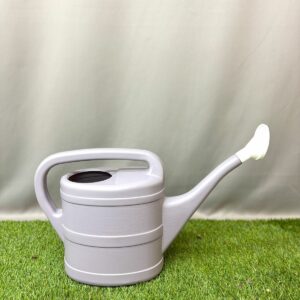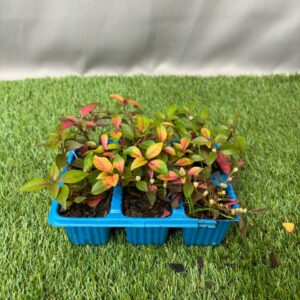Herbs for Health
Kitchen gardening

Herbs for Health
In today’s busy and stressful world, growing fragrant herbs for culinary and medicinal purposes is a relaxing hobby, but always consult a doctor before starting a home treatment!.
Creating a herb garden is a useful way to distract your mind from the pressures of everyday life. A garden of herbs gives many months of pleasure – the fragrances are there from the first leaf to the last, and the herbs are on hand to use for the kitchen and medicine chest all year round.
Success with herbs
Herbs are easy-to-grow plants, provided you take the following into consideration:
- Choose a sunny site. The ideal site will have full sun for most of the day, but at least six hours of sunlight per day is essential for most herbs. If you want to use herbs to enhance your culinary skills, the best place for them is where they are easily accessible from the kitchen. Medicinal and pot-pourri herb gardens can be anywhere in the garden.
- The soil must drain well. Most herbs hate to have waterlogged roots. Adding plenty of compost will lighten the soil and provide a fertile growing medium.
- Determine the water needs. Most herbs are water smart plants that do not require a great deal of water. However, there are some that need frequent watering. This group should be planted next to each other for convenient watering, or amongst other garden plants with high water requirements. They include most of the summer annuals, such as basil and coriander, as well as the mint family.
- Determine space requirements. Some plants, such as the mint family, tend to be invasive if given a chance. Plant these in a container, then sink the whole container into your garden soil. The container will restrict their root growth. Also notice the growth spread of the various herbs, and allow space for the herbs to develop by not planting them too close together.
- Avoid over-fertilisation. Herbs develop a better flavor if they are slightly stressed. So don’t coddle them too much, or you’ll have herbs with a bland, boring taste. Applying compost twice a year should be sufficient.
- Consider a theme garden. If you don’t quite know where to start, plant a themed herb garden. If cooking is your passion, choose culinary herbs. If you are interested in the history of gardening, create a medieval herb garden. If you have an indigenous garden, choose traditional healing plants. If you like herbal teas, plant herbs that can be used to make them. If you like fragrance, choose herbs with fragrant foliage.
Here are some ideas to inspire you :
A medieval traditional garden
In the Middle Ages people used many plants and herbs in their daily life. Herbs were used to flavour food, to dye cloth, and to heal ailments. The herb garden so common in medieval monasteries and castle gardens comprised a number of square or rectangular beds in a formal pattern.
You do not need a large garden to grow medieval herbs. Ancient, medieval and modern people have been tucking herbs into tiny gardens from time immemorial, and so can you. Try these herbs reminiscent of a medieval herb garden:
- Lemon balm has green foliage that smells and tastes of lemons. It likes moist soil and will grow in partial shade. Medicinally it was used for depression, anxiety and melancholy. Make a tea from the leaves and sweeten with honey. Fresh lemon balm leaves were used to polish furniture.
- Lavender is a shrub with grey-green foliage and flowers that are usually mauve. It likes full sun. There are many different lavender varieties – make sure you choose one that is the correct size for the space you have allotted it. Some varieties make a neat hedge when clipped. The scent is calming, and was used to treat headaches and sleeplessness. Medieval linens were scented with lavender, either by being stored with it, or by being rinsed in lavender water.
- Mint species are all fast-growing perennials with a distinctive minty scent. Though they like sun or partial shade, they will grow well in shady spots, especially peppermint. They like frequent watering and have vigorous roots, so planting mint in a container is a good idea. The medieval mints are garden mint, peppermint, and pennyroyal. A peppermint mint tea was considered the best treatment for stomach ailments. The leaves of all mints were rubbed on the temple to ease headaches. Mints were also used to flavour salads, meat dishes, omelettes, and sauces.
- Chives are a form of wild onion, well worth growing, even if only in a pot on the windowsill. They also make an attractive edging plant in a herb garden. Onions of all kinds were used with wild abandon in medieval cooking, with chives being added to salads and egg dishes. Chives like sun and regular watering, and need to be divided every few years.
- Borage is a 1m tall annual with large, hairy leaves and light-blue flowers. It likes sun with a little shade, so if your plot is sunny, tuck it in close to the larger plants that need regular watering. Both leaves and flowers were used in salads, and were thought to combat melancholy.
- Comfrey was called ‘bone-set’ by medieval herbalists who lifted out the root in spring, grated it, and kept it in jars to help heal broken bones. As a tea, it was used for everything from bronchitis to haemorrhaging. Nowadays a tea made from the leaves is recognised as a bone strengthener, a hot poultice of chopped leaves will reduce swelling and inflammation, while cut up comfrey leaves added to the compost heap will hasten its decomposition. Plant in partial shade or full shade and keep it moist at all times.
An Italian culinary garden
Italy is said to have some of the best cuisine in the world and at the heart of that cuisine are their famous herbs. Growing your own Italian herb garden is sure to be rewarding and delicious. The herbs that are used in Italian cuisine are basically all found in the Mediterranean region so these herbs are usually water smart, and like well-drained soil and plenty of sun.
- Basil is probably the most well known Italian herb. It is one of the two main ingredients in pesto, used as a topping for pizza, and added to many other dishes. Avoid washing basil leaves as they will lose their flavour. Basil is a sun-loving summer annual that needs regularly watering. There is also a perennial basil that thrives in gardens with minimal frost. Pinch back the stems when they show signs of bud formation as once it flowers the leaves lose their intense flavour. Pruning back the stems also encourages the plant to grow bushier.
- Parsley, especially flat-leafed parsley, is part and parcel of Italian cuisine. It likes sun to partial shade and regular watering. In a formal garden or a container planting it makes a pretty edging plant.
- Oregano is decorative as well as delicious, sprouting lovely little purple flowers at maturity. The leaves are used to flavour pizza and pasta sauces. Harvest the leaves after it flowers, as this is when their flavour is the strongest. This water wise herb prefers full sun and matures best in hot weather.
- Rosemary is widely used in Italian cuisine to flavour pork, lamb and chicken dishes, and the pretty blue flowers can be used in salads or as a garnish. This water wise evergreen shrub can grow to over 1m tall, but can be pruned to shape. In gardens with moderate frost plant it in a sunny but sheltered position as it does not like frost. It makes a lovely hedge in formal herb gardens, but will also do well in a container.
- Bay is a tall evergreen shrub with dark green leaves that are used throughout Italy. They are added to pasta sauces, to marinades for meat, and to soups and broths. The leaves retain their flavour when dried. Plant this water wise shrub in full sun. If you remove the branches from the main stem, you can train it into a lollipop topiary.
- Sage is another favourite herb. Fresh sage leaves are chopped or shredded and used to flavour game dishes, risottos, and stews. When sautéed in butter they make a classic Roman pasta sauce. This water wise evergreen shrub has woolly greyish leaves and likes a sunny location in soil that drains well. Pruning after flowering will keep plants attractive and prevent them from getting too woody and leggy.
You might also like
Shop online
-
Watering Can
- R104.99
- Add to cart Learn More
-
FENDONA 50ML
- R179.99
- Add to cart Learn More




